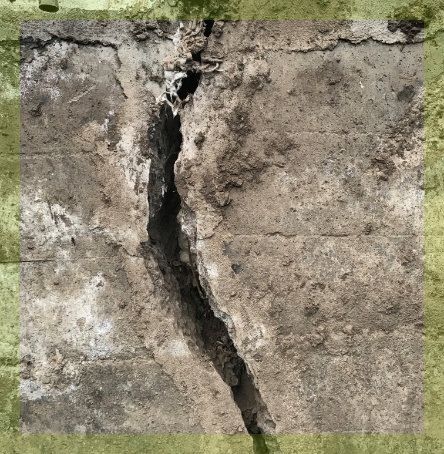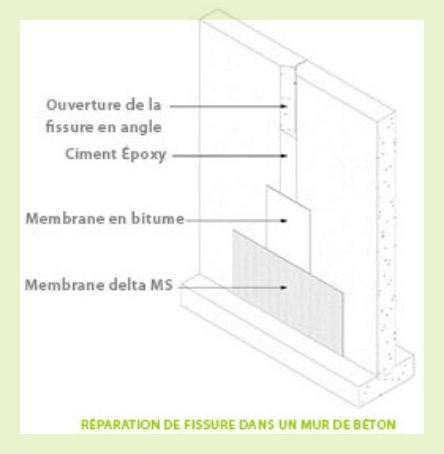Foundation crack repair
Protect your foundation before it’s too late
Cracks are one of the most common signs of a foundation problem. They can appear on the concrete footing, basement walls, or even inside the building. But not all cracks are the same.
Some are minor, caused by concrete shrinkage, while others signal settlement, soil movement, or poor drainage. In every case, waiting is risky.
At Fondabec, our mission is to deliver a clear diagnosis and a durable repair, whether through injection, piles, or structural underpinning.

How to recognize the most common types of cracks
Before planning any repair, it’s essential to identify the type of crack you’re seeing on your foundation. Each crack has a specific cause, which we detail below, and a matching solution. By understanding the visual characteristics and likely causes of each crack type, you’ll be better equipped to know when quick intervention is needed, or when simple monitoring is enough for now.
Here are the most common crack types found on foundations in Quebec.
Passive (shrinkage) cracks
- Fine, often vertical or diagonal
- Appear soon after concrete is poured
- Often superficial but should be monitored if they widen
Active (moving) cracks
- Change shape or width with the seasons
- May indicate a soil or foundation drainage problem
- Require prompt evaluation
Horizontal cracks
- Particularly concerning
- Often linked to excessive lateral pressure (water, soil, frost)
- Require structural intervention
Stair-step cracks (in brick or stucco)
- Often caused by soil settlement
- Associated with a lack of foundation stability
Foundation cracks: when should you act?
Assessment and evaluation of your foundations
- Water infiltration in the basement
- Cracks that go through the entire wall
- Visible widening of an existing crack
- Floor settlement or sticking doors/windows
- Clay soil or poorly drained ground

What are the risks of not repairing a foundation crack?
Water infiltration and chronic humidity
Progressive structural deterioration
Resale or insurance issues
What solutions are available to repair cracks?
Assessment and evaluation of your foundations
- A 25-point visual and structural inspection of cracks, settlement or misalignment
- An analysis of soil type (clay, backfill, loose soil, etc.)
- An estimate of current load-bearing capacity
- Tailored technical recommendations, with plans and specs if needed
Crack injection (polyurethane or epoxy)
- Used for non-structural cracks
- Seals and waterproofs the foundation
- Quick to apply, effective against water infiltration
- Not suitable for active or evolving cracks
Pile installation (hydraulic or driven)
- Recommended when cracks are due to soil settlement
- The building is stabilized or re-leveled with piles anchored to refusal
- A durable, proven structural treatment
Foundation rebuilding (or partial replacement)
- For foundations that are severely damaged, unstable or poorly built
- Requires excavation, formwork and new concrete placement
- Work supervised by an engineer
- Integration of new drainage and waterproofing as needed
How to prevent foundation cracks
Control drainage around the house
Avoid overloading near the foundation
Avoid abrupt moisture variations
Maintain your foundation
A doubt or a question about a crack?
For more than 20 years, Fondabec has supported homeowners in Greater Montreal and across Quebec with their crack inspection and repair projects. Whether you’re in Laval, Longueuil, Terrebonne, the North Shore, the South Shore or elsewhere in the region, our team moves quickly to assess your situation and propose the most durable solution.
Fill out this form or call us today!
FAQ
Is a crack in concrete always serious?
How much does crack repair cost?
Can a crack be repaired in winter?
Should I have every visible crack inspected?
Is excavation required to repair a crack?
For over 20 years, Fondabec has been assisting homeowners in Greater Montreal and throughout Quebec with their excavation projects.
- 957 Rue des Forges, Terrebonne, QC J6Y 0J9
- (514) 838-5379
- info@fondabec.ca
-
Monday to Saturday
7:00 am to 6:00 pm

